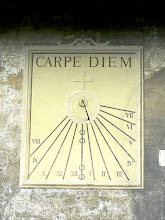BERNARD PALISSY, FRENCH ARTIST POTTER



PHOTOS :
1- Bernard Palissy, 1510-1589
2- Dish with Goddes Pomona
3- Jug and Plate
______________________________
BERNARD PALISSY
***************
Bernard Palissy was believed to be born around 1510, either at Saintes or Agen in France.
He is thought to have been a potter, craftsmen and writter.
Unfortunately he died nearly eighty years of age in Bastille in 1589.
His father was a glass-painter and so he was very well trained by him.
When he was first shown a white enameled cup, which caused him surprise and excitement, he decided to spend his life “to use his own expressive phrase, like a man who gropes in the dark, in order to discover the secrets of manufacture”.
Bernard Palissy was determined to imitate Chinese porcelain.
Even though he failed with Chinese porcelain, he succeeded in making kinds of peasant pottery decorated with naturalistic colored applied reliefs with glazes and enamels.
While searching some of his work, One is really impressed on how his work contains so much mythological history.
Bernard Palissy is known for his “rustic” earth ware, covered with colored lead glazes.
Also he almost never used the potters wheel.
Few of his most characteristic productions were large plates, ewers, oval dishes and vases, which he would usually apply realistic figures of fish, plants, shells, reptiles and other objects.
The colors he used to choose for his pieces were various shades of blue from indigo to ultramarine, greens, several tints of browns and greys and some yellow.
Some of Palissy's best ware collections are in the Museums of the Louvre, the Hotel Cluny, and Sevres and also in England in the Albert Museum.
In 1565 he was appointed as “inventor of rustic pottery to the king and the queen mother”.
His work passed through many phases.
After his “rustic figurines”, he made multiple dishes and plaques and also reproductions of the pewter dishes of Francois Briot and many other metalworkers of that period.
Palissy was one of the first Europeans to articulate the correct theory of fossils and his pieces and ideas of spring and underground waters were thought to be far in advance of the general knowledge of his time.
============================
....
Labels: B


0 Comments:
Post a Comment
<< Home